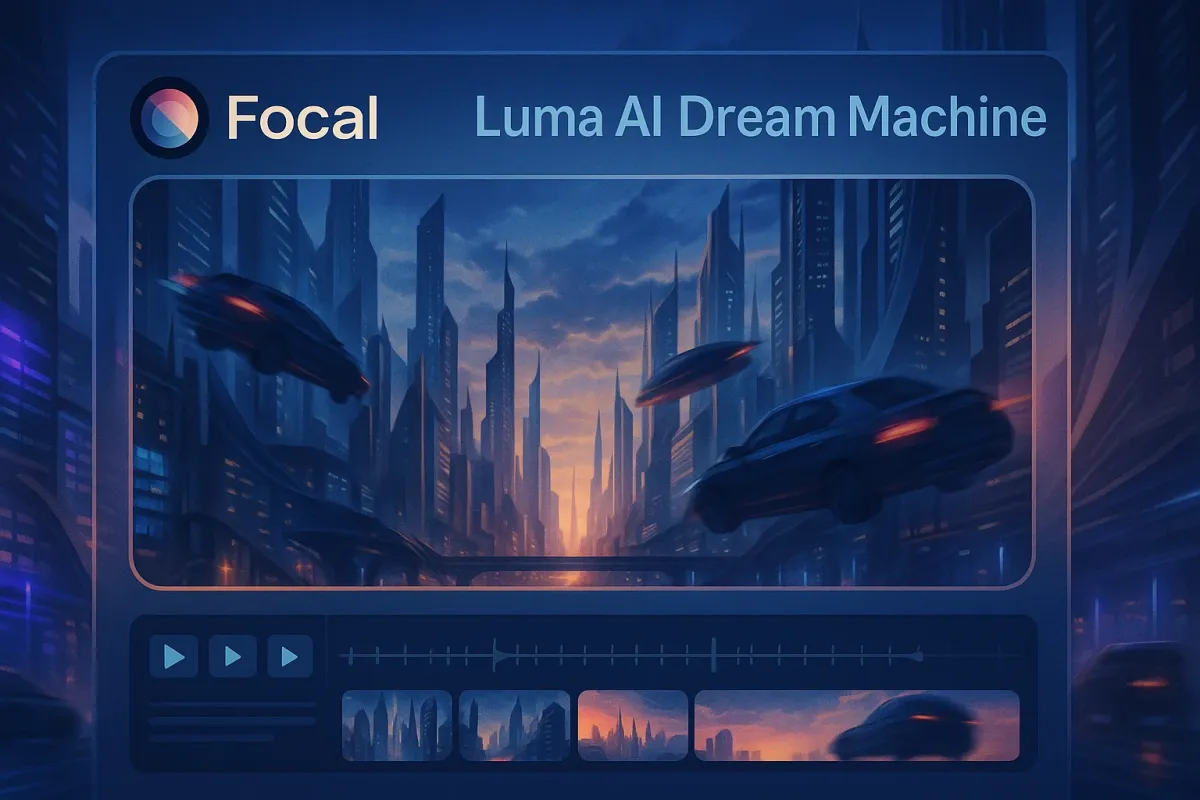Creating Cinematic Sequences with Luma AI Dream Machine: A Tutorial

Why Luma Dream Machine Is a Game-Changer for Cinematic AI Video
Luma’s Dream Machine isn’t just impressive—it’s cinematic. Unlike most AI models that give you jittery scenes or uncanny characters, Dream Machine excels at rendering high-motion, visually coherent shots that actually feel like film. Whether you're building a moody music video, a surreal short, or atmospheric B-roll, this model gives you results with emotional weight and visual consistency.
In this tutorial, we’ll walk through how to use Dream Machine to craft cinematic sequences step by step—from prompt setup to sequencing your shots like a real director.
Step 1: Start with a Scene-First Mindset
Don’t Just Prompt a Vibe—Prompt a Shot
Think like a filmmaker. Don’t just write “city at night.” Instead, describe the scene as if you're storyboarding:
- ✅ “A wide aerial shot of a neon-lit city skyline at midnight, cars passing below, camera slowly pushing forward”
- ❌ “Cool futuristic city at night”
Luma responds to cinematic logic. Frame composition, camera movement, and light behavior all translate visually when you describe them clearly.
Lock in Mood and Motion Early
Set the tone from the start. Use motion words (“slow pan,” “tracking shot,” “over-the-shoulder”), lighting cues (“sunset glow,” “harsh shadows,” “low-key interior”), and mood indicators (“lonely,” “tense,” “dreamlike”).
These small details build the foundation for cinematic depth.
Step 2: Break Your Story Into Visual Beats
Think in Shots, Not Scenes
A cinematic sequence is made up of beats—discrete visual moments that build a rhythm.
For example, let’s say you want to show “a girl running through a forest.” Don’t try to make that one prompt. Break it down:
- Establishing: “A misty forest at dawn, trees stretching into the fog, ambient birdsong”
- Action: “A young girl in a white dress running barefoot through fallen leaves, camera handheld, motion blur”
- Close-up: “The girl’s face in soft focus, breathing heavily, light breaking through trees behind her”
Each of these can be prompted separately and edited together for real cinematic pacing.
Step 3: Use Dream Machine’s Motion Strengths
Embrace High-Motion Scenarios
Luma’s edge over most models is in how well it handles motion: walking, spinning, hair movement, water ripples, atmospheric elements like fog and dust.
If you want energy in your shots:
- Prompt scenarios with real-world physics (rainfall, wind, running, waves)
- Use verbs like “swirling,” “rushing,” “collapsing,” or “gliding”
Luma gives dynamic motion with clean frame-to-frame transitions—great for action or music sequences.
Step 4: Sequence Your Shots for Visual Rhythm
Once you’ve generated your shots, the magic is in how you cut and sequence them.
Here’s How We Do It at Focal:
- Generate 3–5 clips per scene, varying angle, speed, or lighting slightly
- Drop clips into our smart timeline editor
- Sync to AI-generated voiceover or music
- Use insert shots (like close-ups or object details) for visual pacing
- Trim timing per beat—shorter shots for tension, longer ones for emotion
The result? A cinematic flow that feels hand-edited—without ever touching a traditional editing suite.
Step 5: Combine With Other Elements for Full Scenes
Luma handles visuals. Focal fills in the rest.
To make your sequence sing:
- Add voiceover with Focal’s AI voice sync tool
- Insert overlays like titles or callouts
- Pair with ambient music or AI-generated soundscapes
- Use auto-captioning to match emotion with readable dialogue or lyrics
You can create an entire story-driven video or music sequence in under an hour—no studio, no crew.
Luma Prompt Templates to Try
Use these as starting points:
- “A slow zoom on a vintage motorcycle parked on an empty road at golden hour, shadows stretching”
- “A woman walking alone through snowfall in the city, dim streetlights casting soft glows”
- “Overhead drone shot of cliffs during stormy weather, waves crashing, mist rising from below”
Adjust angle, motion, and lighting to suit your tone.
Common Mistakes to Avoid
- Trying to pack too much into one prompt → Break it up. Use separate clips for each beat.
- Leaving out motion or light cues → These are what make it cinematic.
- Ignoring timing → If all your shots are the same length and energy, the final sequence feels flat.
Final Thoughts
Luma Dream Machine is one of the few AI models that feels like it understands how film should look. It doesn’t just render a pretty image—it builds mood, motion, and cinematic structure when prompted with intention.
With a bit of planning and Focal’s smart editing tools, you can create full-on film sequences with just text and vision.
Luma Dream Machine works seamlessly in Focal, letting you generate cinematic shots and shape them into your own visual story in minutes.
📧 Got questions? Email us at [email protected] or click the Support button in the top right corner of the app (you must be logged in). We actually respond.
